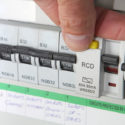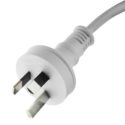
RCD Testing
15/07/2021
The Australian Test and Tag Guide
11/04/2025Test and tag services are a critical aspect of workplace safety, ensuring your electrical appliances meet compliance standards. However, understanding the costs associated with these services can be challenging, given the variety of pricing methods used by contractors. In this guide, we’ll explore the four main pricing structures, delve into potential hidden fees, and provide practical tips to help you choose the right contractor without overspending.
Why Test and Tag Is Essential
Before we dive into pricing, it’s important to understand the significance of test and tag services. These services involve inspecting and testing electrical appliances to ensure they are safe to use. By identifying potential faults, test and tag helps prevent electrical hazards such as shocks, fires, and equipment damage. Moreover, compliance with workplace safety regulations often requires regular testing and tagging of appliances.
Four Common Pricing Methods for Test and Tag Services
The cost of test and tag services varies depending on the contractor and their pricing structure. Here are the four most common methods:
1. Per Tag Rate
This is the most popular and widely used pricing method.
How It Works: Contractors charge a set fee for each appliance tested and tagged.
Advantages:
Transparent and easy to calculate—pay only for what’s done.
Particularly suitable for businesses with a small to medium number of appliances.
Disadvantages:
Costs can add up if you have a large number of appliances.
Some contractors may impose minimum tag requirements or additional fees.
2. Hourly Rate
How It Works: Contractors charge based on the time it takes to complete the task.
Advantages:
Potentially cost-effective if the work is completed quickly.
Useful for smaller jobs or those with fewer appliances.
Disadvantages:
If the contractor works inefficiently or the job takes longer than anticipated, costs can rise significantly.
Harder to estimate the final cost compared to other methods.
3. Combination Rate
This method combines the per tag rate with an hourly fee.
How It Works: You’re charged a lower per tag rate supplemented by a small hourly fee.
Advantages:
Offers flexibility in pricing while ensuring contractors are compensated fairly for their time.
Balances cost-effectiveness with contractor accountability.
Disadvantages:
Complexity in estimating total costs beforehand.
4. Fixed-Rate
How It Works: The contractor provides a flat fee for the entire job after assessing your requirements.
Advantages:
Predictable costs, making it easier to budget.
Eliminates surprises as long as the scope of work doesn’t change.
Disadvantages:
Contractors may include a buffer in the quote to cover unforeseen delays or challenges.
If the job is completed quickly, you may end up paying more than necessary.
Hidden Costs to Watch Out For
While most contractors are transparent about their charges, some may use a low initial quote to attract customers and then add on unexpected fees later. This practice, known as “trickle pricing,” can significantly inflate the total cost.
Here are common hidden fees to look out for:
Travel Fees: Charges for travelling to your site, especially for remote locations.
Invoicing Fees: Costs for generating and sending invoices.
Statement Fees: Additional charges for providing account statements.
Per Line Fees in Reports: Fees for each appliance listed in the compliance report.
Inventory Management Fees: Costs for organizing and managing records of tested appliances.
To avoid surprises, always request a detailed breakdown of potential fees before engaging a contractor.
Choosing the Right Contractor: Tips for Avoiding Costly Mistakes
1. Review Terms and Conditions Carefully
Always read the contractor’s terms and conditions thoroughly. Look for any clauses that specify additional charges, such as travel time, report generation, or minimum tag requirements.
2. Request a Detailed Quote
Ask for a comprehensive quote that includes all foreseeable costs. Ensure the contractor specifies whether the quote covers additional expenses like re-testing faulty appliances or follow-up visits.
3. Avoid Sight-Unseen Quotes
While it may be tempting to accept a quote without an on-site assessment, this can lead to inaccurate pricing. A contractor who hasn’t evaluated the job in person might underestimate or overestimate the scope of work, resulting in either inflated costs or subpar service.
4. Prioritise Transparency
Choose a local contractor with a reputation for honesty and transparency. Look for reviews and testimonials that highlight their reliability and clear communication.
5. Consider Value Over Price
While budget-friendly options can be appealing, they may come with compromises in quality or hidden costs. Investing in a reputable contractor ensures the job is done thoroughly and efficiently, potentially saving money in the long run.
Why Regular Test and Tag Services Matter
Beyond compliance, regular testing and tagging offer numerous benefits, including:
Enhanced Safety: Identifies potential electrical hazards before they cause harm.
Increased Equipment Lifespan: Early detection of faults helps prevent long-term damage.
Legal Compliance: Meets workplace safety standards, reducing liability risks.
Improved Workplace Productivity: Minimises downtime caused by equipment failure.
By scheduling routine test and tag services, you can ensure a safer and more efficient working environment.
The Risks of Skipping Test and Tag Services
Failing to test and tag your electrical appliances can lead to severe consequences, such as:
Safety Hazards: Faulty appliances increase the risk of electrical shocks, fires, and accidents.
Legal Penalties: Non-compliance with safety regulations can result in fines and legal actions.
Reputational Damage: Unsafe practices can harm your business’s reputation among clients and employees.
Conclusion
Understanding the costs and pricing methods of test and tag services is essential for making informed decisions. Whether you opt for a per tag rate, hourly rate, combination rate, or fixed-rate, ensure you choose a contractor who is transparent and reliable. Always review terms and conditions, request detailed quotes, and prioritise value over price. By staying proactive and informed, you can maintain compliance, enhance workplace safety, and avoid unnecessary expenses. For more insights and tips, visit our website and explore our resources on test and tag services. Stay safe and compliant!




